Passport to jihad: European foreign fighters joining ISIS in the Philippines
As Islamic State loses territory in Iraq and Syria, the Philippines could offer an attractive alternative destination for those seeking to travel from the west to fight
As Islamic State has suffered significant losses of its core Syrian and Iraqi territory, those wishing to fight for the group have needed to look elsewhere. The Philippines is one place that appears to have become a more attractive destination for ISIS supporters. This year has seen previously unprecedented attempts by Europeans trying to join ISIS in the Philippines, with some successfully making the journey.
Following their declaration of a caliphate in 2014, ISIS started receiving pledges of allegiance, or bayah, from militant groups around the world. This included multiple Philippines-based groups including several Abu Sayeef battalions, the Maute Group, Ansharul Khilafah Philippines, and Bangsamoro Islamic Freedom Fighters. These groups along with others from the region were organized as Islamic State in East Asia. ISIS appointed the Filipino militant Isnilon Hapilon to be the overall Emir, though in practice there was significant operational independence among different groups.

Even before pledging allegiance to ISIS some of these Filipino groups had welcomed foreign fighters, normally from nearby countries like Malaysia and Indonesia. But following their bayah, larger numbers of foreign fighters, including those from outside the region, started to arrive.
During the battle of Marawi, between May and October 2017 when ISIS militants overran the southern city, their presence received widespread attention. As well as regional fighters from nearby countries there were also multiple reports of foreigners from further afield. The nationality and number of these non-regional foreign fighters is hard to clarify, but Filipino government officials have stated that militants from Saudi Arabia, Yemen and Chechnya were present, while other sources report more nationalities.
Would-be European foreign fighters attempt to travel
A few months later, on January 22, a Spanish man was arrested on Basilan, an island near Mindanao with an active ISIS insurgency. This was the first known case of a European successfully travelling to the Philippines to join an ISIS group. In his possession were two grenades and bomb-making parts, and he was with a known local ISIS militant at the time of his arrest.
Also in January, Lewis Ludlow, a U.K. national, was stopped while trying to board a flight to the Philippines where he was planning to join an ISIS group. Despite being prevented from traveling he still supported ISEA from the U.K., setting up Facebook and Paypal accounts to send funds to support terrorism in the region.
Ludlow was in contact with a man in the Philippines known as Abu Yaqeen. Paweł Wójcik, an expert on ISIS affiliates, told The Defense Post a man with that name is based on the island of Sulu in the Philippines. If that is the same person Ludlow was communicating with, Sulu could have been his potential destination. The Defense Post has so far been unable to confirm they are the same person.
In April, two people unsuccessfully attempted to travel from Germany to the Philippines to join ISIS. One German man was apprehended by police before leaving the country, while a second, Turkish national Emre U., made it to Bangkok before being arrested and deported.
Germany’s Federal Criminal Police Office told The Defense Post that there have been three such exits or attempted exits towards the Philippines. They declined to provide information about the third exit, including whether the person successfully reached their destination.
Finally, someone left Switzerland between May and August and successfully joined a jihadist group in the Philippines according to information released by the Swiss government. Multiple Swiss government agencies declined to provide further details to The Defense Post but considering the nature of jihadist groups in the Philippines this person most likely joined an ISIS affiliated group.
These cases together represent an unprecedented movement of Europeans trying to or successfully joining ISIS in the Philippines.
Preceding them there was only one known attempt: Ryan Counsell was arrested in 2016 while planning to leave Britain for the Philippines. It is notable that this case was also not as advanced as those from 2018, where individuals had moved beyond planning to actually traveling.
In addition to Europeans, other non-regional foreign fighters have also traveled to the Philippines this year. An Egyptian man was arrested while attempting to reach Basilan in February. A UAE-born man was also arrested that month; significantly he was reportedly a former ISIS commander in Syria.

On July 31, a van filled with explosives was driven to a security forces checkpoint on the island of Basilan and detonated. Eleven people were killed, including the driver, and several more were injured. In a claim for the attack issued by its Amaq agency, ISIS identified the driver as a Moroccan man. According to the government in Manila, his children were also in the country. A photoset released by ISIS in August also showed a man of Arabic appearance, and a child who may have been his son.
A new and growing destination for potential ISIS fighters?
There are a number of factors that may be behind the increase in would-be foreign fighters attempting to travel to the Philippines, and it will likely remain a popular destination in the future. In recent years, some 40,000 foreigners are believed to have traveled to Iraq and Syria to join ISIS. However, recent major defeats have reduced the group’s strength there to an insurgency with limited territorial control. Traveling to this core territory is no longer the option it once was for foreigners – if they want to fight for ISIS they have to look for another destination.
Outside of its core territory many of ISIS’s various affiliates have also drawn foreign fighters. However, the relatively weaker strength of these branches and the difficulty in reaching them mean that they have not become attractive for non-regional foreign fighters, with a few exceptions.
Libya was once a potential destination, but ISIS’s presence there has also been reduced to an insurgency. There have also been reports of non-regional foreign fighters traveling to join Islamic State-Khorasan Province, the group’s wilayat in Afghanistan and Pakistan. This includes claims of French and Algerian fighters, but there too ISIS has suffered setbacks. Its forces in the northern province of Jowzjan collapsed in recent months with their territory being captured by the Taliban and several hundred fighters surrendering to the Afghan government, potentially making it a less desirable location then it once was.
Compared to other branches, ISEA has many attributes which make it a more attractive destination. Awareness of the group’s activity in the country has been raised recently, particularly during the battle of Marawi.

While a physical loss for ISIS, with the death of almost 1,000 fighters including the emir, Isnilon Hapilon, and many other key commanders, the Marawi fight suddenly thrust the Philippines into the spotlight amongst ISIS supporters. The demonstration that ISEA had the ability to seize an entire city was a great success for them, showing off a capability that few other ISIS branches have achieved.
This effect was boosted by the large volume of propaganda produced during the battle including Amaq statements, photosets, and short videos detailing the fighting.
The tenth edition of Rumiyah, the group’s monthly magazine, was subtitled “The Jihad in East Asia” and contained multiple articles focusing on the Philippines. Al Hayat released Inside the Caliphate 3 which was filmed in Marawi, the only one of the seven videos in the series that was filmed outside Iraq and Syria. A nasheed, a form of vocal music popular in the Islamic world and often used by ISIS as the soundtrack to its videos, was also released dedicated to the fighters there, entitled “The Brothers in Marawi.”
Propaganda continues to be released, though at a lower rate than during the battle, keeping the Philippines prominent in the minds of ISIS supporters. Amaq often reports on fighting between ISIS militants and security forces, while photos are also released showing combat, everyday life, and eulogising dead fighters. As long as ISIS can continue to produce propaganda from the Philippines it will likely continue to attract foreign fighters there.
Foreign fighters offer experience and propaganda value
Perhaps most significantly, ISIS issued several calls for people to travel to the Philippines.
A video released by Al Hayat in September 2017 featured a Singaporean foreign fighter in Syria calling on people to “Join the ranks of the Mujahidin in East Asia, and inflict black days upon the crusaders. Otherwise, make your way to Sham [Syria], Khurasan, Yemen, West Africa, and Libya.”

It is significant that East Asia was highlighted as the first destination suggested to potential foreign fighters. Hapilon in an interview with Rumiyah in June 2017 also encouraged people to travel to the Philippines.
The Philippines is tourist destination with regular flights from Europe and elsewhere in the world, unlike the active warzones and failed states where most ISIS branches operate. This makes it much easier for foreign fighters to reach, and gives greater plausible deniability to those attempting to travel there. When stopped at the airport, the U.K. national Ludlow claimed he was a “sex tourist.” His passport was confiscated but he was not arrested.
Even if traveling to the Philippines overtly is difficult, there are still well-worn smuggling routes into the country for a would-be foreign fighter, through the island-strewn waters separating Malaysia from the southern Philippines. ISIS has set up cells in Malaysia with the explicit purpose of helping to facilitate travel.
For ISIS in the Philippines, a possible influx of foreign fighters provides several benefits. The battle of Marawi saw heavy losses for the group with almost 1,000 militants dead, and fighting since then will have also taken a toll. New recruits will be important to help rebuild ISEA ranks, even if potential fighters from places like Europe are unlikely to have previous combat experience.
Experienced foreign fighters, such as the Egyptian who was reportedly an ISIS commander in Syria, will be even more of an asset. If they have fought in other locations, such as Syria, they could bring important lines of communication to ISIS central or to other branches. These fighters also bring technical expertise, and new tactics that could help intensify ISIS activities in the Philippines. Foreigners who can provide training in bomb-making or weapons handling could help increase the effectiveness of local militants.
The Basilon SVBIED attack in July is potentially the result of foreign experience and shows how the adoption of tactics used by ISIS in Iraq and Syria can be beneficial to affiliates.
Hugo Kaaman, an analyst who researches SVBIEDs told The Defense Post that images that circulated on social media claiming to show the vehicle’s payload showed bombs that “appeared visually very similar to the standardized IEDs that ISIS typically use in their SVBIED payloads,” suggesting some form of information-sharing.
ISEA could now obtain advanced information on weapons that ISIS refined over years of fighting in Iraq and Syria. Kaaman explained this could allow ISEA to “employ SVBIEDs in an efficient and advanced manner without themselves having to go through the extensive refinement process.”
In addition, local militants have shown significant aversion to carrying out suicide attacks and this may have been why the driver of the Basilan SVBIED was from Morocco. An influx of foreigners could allow this tactic to be used more often, a dangerous prospect for Filipino security services and civilians who could become targets.
Foreign fighters can deliver a propaganda boost. Using foreigners, especially westerners, in their propaganda in a way reminiscent of ISIS in Iraq and Syria could boost its effectiveness, and would also inspire others to attempt to reach ISEA.
According to Wojcik, the expert on ISIS affiliates, the Philippines government should be worried about foreign fighters. They would cause “a consolidation of heavy salafi-jihadi ideology, and a potential change in jihadi landscape, resulting in more violence in the Philippines,” he said. A more radicalized and internationalized conflict with ISEA using deadlier tactics would be increasingly difficult for the Philippines to combat.
Fighters pose problems on their return
There are also concerns for Europe. The potential for returnees was one of many issues raised during the flood of foreign fighters to Syria. While the number of foreign fighters traveling to the Philippines will almost certainly never come near the tens of thousands who journeyed to Iraq and Syria, they still pose problems.
Returnees require monitoring by already overstretched intelligence services. Even if they do not carry out any violent acts following their return they could join, build, or expand radicalized networks in their home countries.
A more immediate issue could be the risk of so-called remote-control attacks, in which an ISIS member based in the group’s territory uses internet communication to coach someone else to stage an attack in their own country. The attacker is guided every step of the way, given necessary support and advice, and in some cases, weapons or explosives have been supplied.
Previous attacks were mainly remote-controlled from Syria, but the group’s losses there have made this tactic harder to carry out.
Branches outside ISIS Central have also deployed this tactic. Foreigners operating from ISIS territory in other countries such as Afghanistan have attempted to stage remote control attacks in the past. If Westerners start operating in the Philippines more often, the possibility of them attempting to stage remote control attacks in their home countries should not be ruled out.

There is already some precedence for this in the Philippines. The Filipino man, Russel Salic was implicated in a planned attack in New York. He sent funds and was communicating with a Canadian man who planned to carry it out.
Salic is also believed to have funded attacks elsewhere, having sent money to a Jasanizam Bin Rosni in Malaysia. Two days later, eight people were wounded in a grenade attack that was claimed by ISIS. Rosni was later arrested for his involvement in the attack.
The current influx of foreigners has not yet matched 2016 and 2017 in the number of arrivals according to Wojcik, but he pointed out this has the potential to change. With limited locations for non-regional foreign fighters to travel to, the Philippines could well become an increasingly popular destination. The ability of ISIS to continue to promote its East Asia branch through propaganda will also likely heavily affect the number of potential foreign fighters.
What is certain is that the recent number of attempts by Europeans is unprecedented. Although only a handful of Europeans have succeeded in the journey, the risk that this is the start of a larger trend should be a concern for the Philippines, nearby nations, and Europe. A more internationalized and radicalized conflict will be more dangerous for the Philippines and the foreign fighters’ own home countries, while helping provide ISIS with a reliable overseas branch at a time where they are suffering setbacks elsewhere.
This post was edited on September 13 to change eight people were injured, not killed, in the attack that Rosni was arrested over.



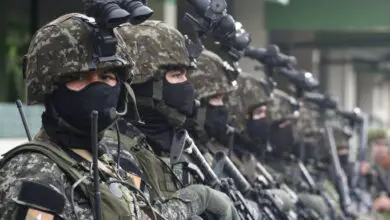

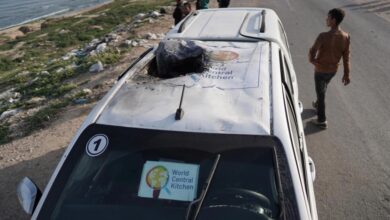

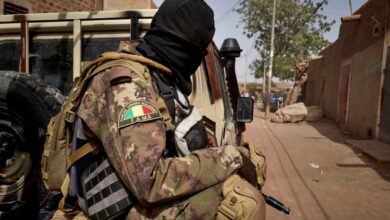

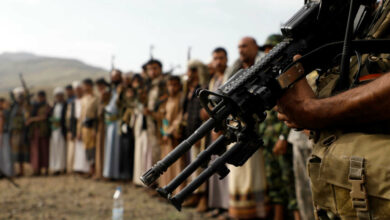

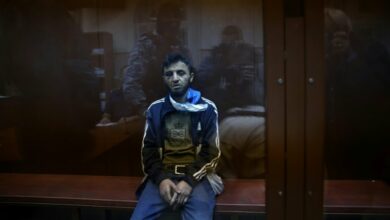
8 Comments